Aston Martin has just announced the most powerful car in its storied 110-year history. Christened the DBS 770 Ultimate, only 499 of the V12 GT are planned to be produced before the current DBS is put out to pasture and a new version takes its place. If you’re of the well-heeled variety, don’t get too excited because Aston Martin says the order books are already closed.
“When an iconic model generation reaches the end of production it is important to mark the occasion with something special,” says Roberto Fedeli, Aston Martin Chief Technology Officer. “In the case of the DBS 770 Ultimate, we have spared nothing in ensuring the final version of our current series production flagship is the best-ever in every respect. Not only is it the fastest and most powerful DBS in our history, thanks to a comprehensive suite of improvements to the transmission, steering, suspension, and underbody structure; it is also the best to drive.”

The DBS has its roots in the DBS Superleggera that first appeared in 2018. The original featured a twin-turbo 5.2-liter V12 with 715 horsepower backed by an eight-speed automatic transmission made by ZF. The new DBS 770 Ultimate will improve on that, achieving close to 770 horsepower and 900 lb-ft of torque. Aston Martin claims the power nudge comes from modified air and ignition pathways plus a 7% increase in maximum turbo boost pressure, with increased response and broader torque curves being notable byproducts. The transmission also has been recalibrated “to enhance shift speeds and driver interaction” for a “truly connected driving experience.”
Steering response and feedback have improved thanks to a new solid mounted steering column, improved front-end lateral stiffness (achieved with an enhanced front cross member and thicker rear undertray) and improvements to the calibration of the Adaptive Damping System.
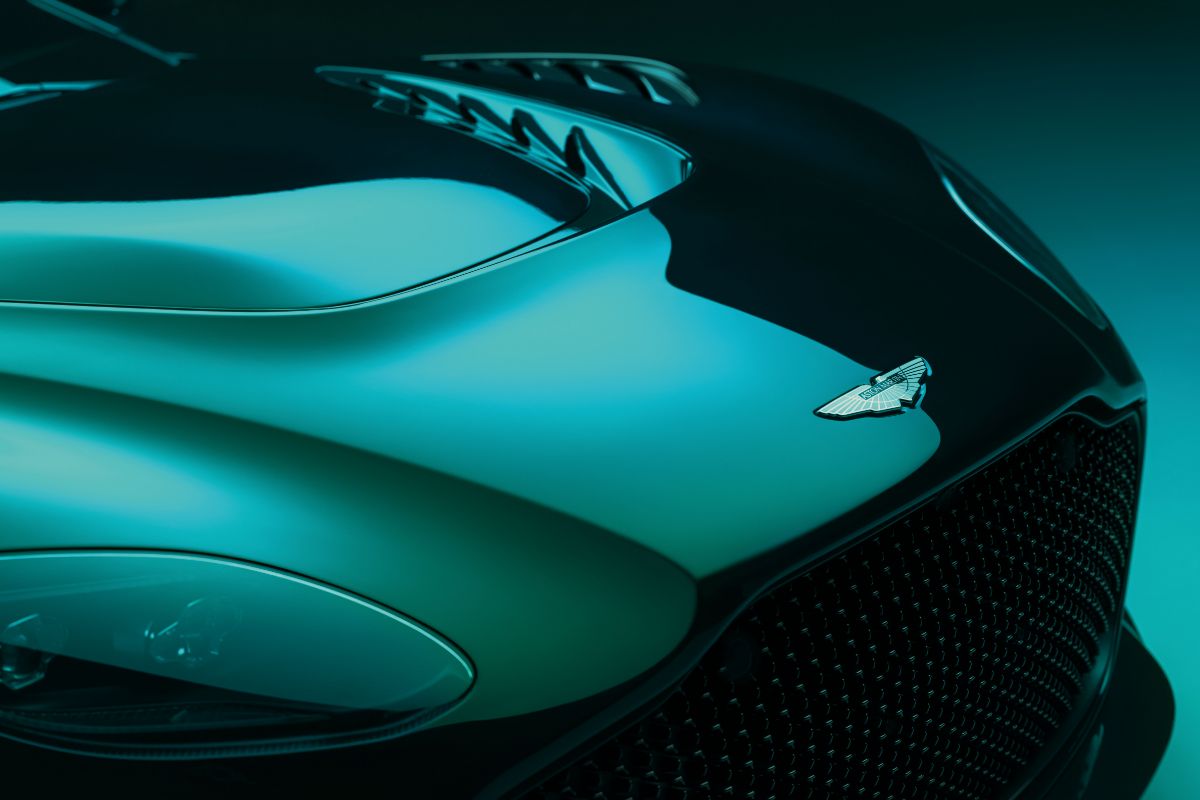
Though the front-end looks similar to previous DBS models, subtle tweaks have increased airflow to the radiators and enhanced thermal management. Assistance comes from the horseshoe engine vent on the hood and new front splitter that integrates two new outboard vents.

A neat feature of the DBS 770 Ultimate is the new 21-inch multi-spoke wheels available in Satin Silver, Satin Black or optional Satin Black with Diamond Turned finish. All are wrapped in Pirelli P Zero tires — 265/35 R21 up front and 305/30 R21 out back.
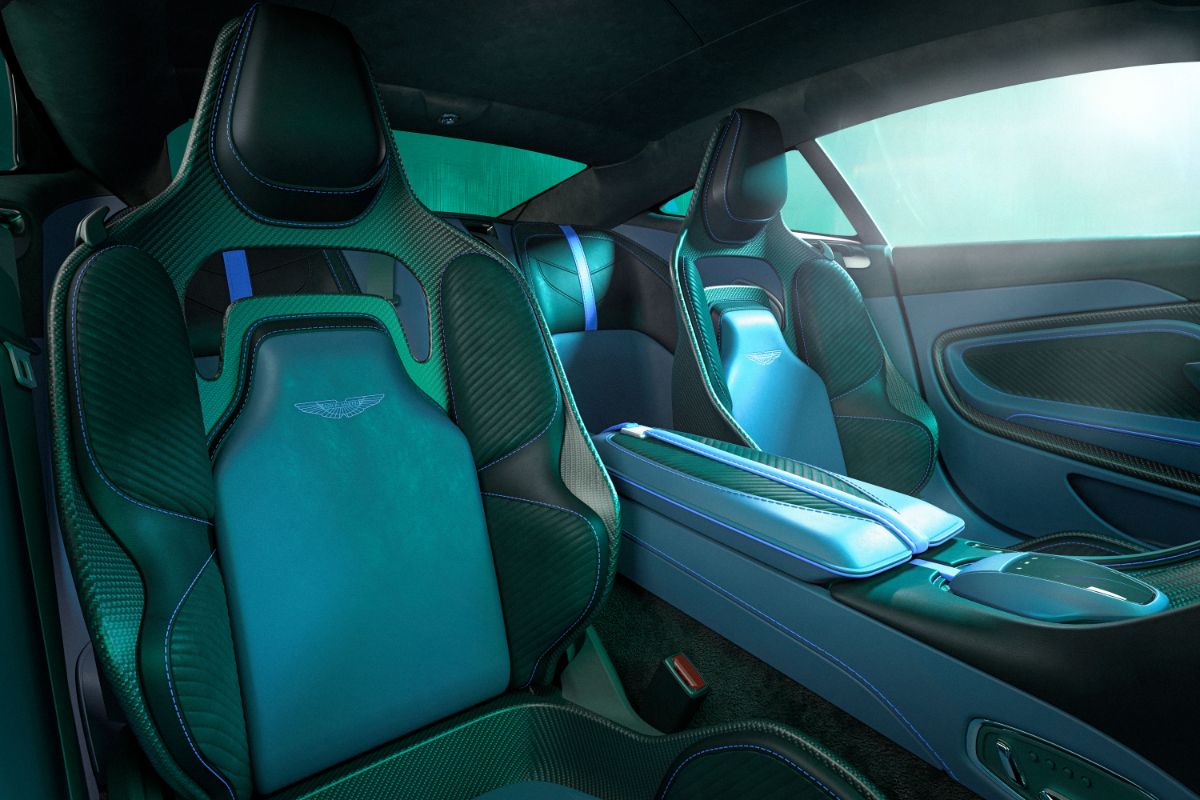

Inside, all DBS 770 Ultimates will come standard with Sport Plus seats trimmed in semi-aniline leather and Alcantara with a fluted quilt and perforation pattern. Sills feature plaques showing the Aston Martin Wings logo, DBS 770 Ultimate logo, and sequence number of the 300 coupes or 199 Volantes being built.
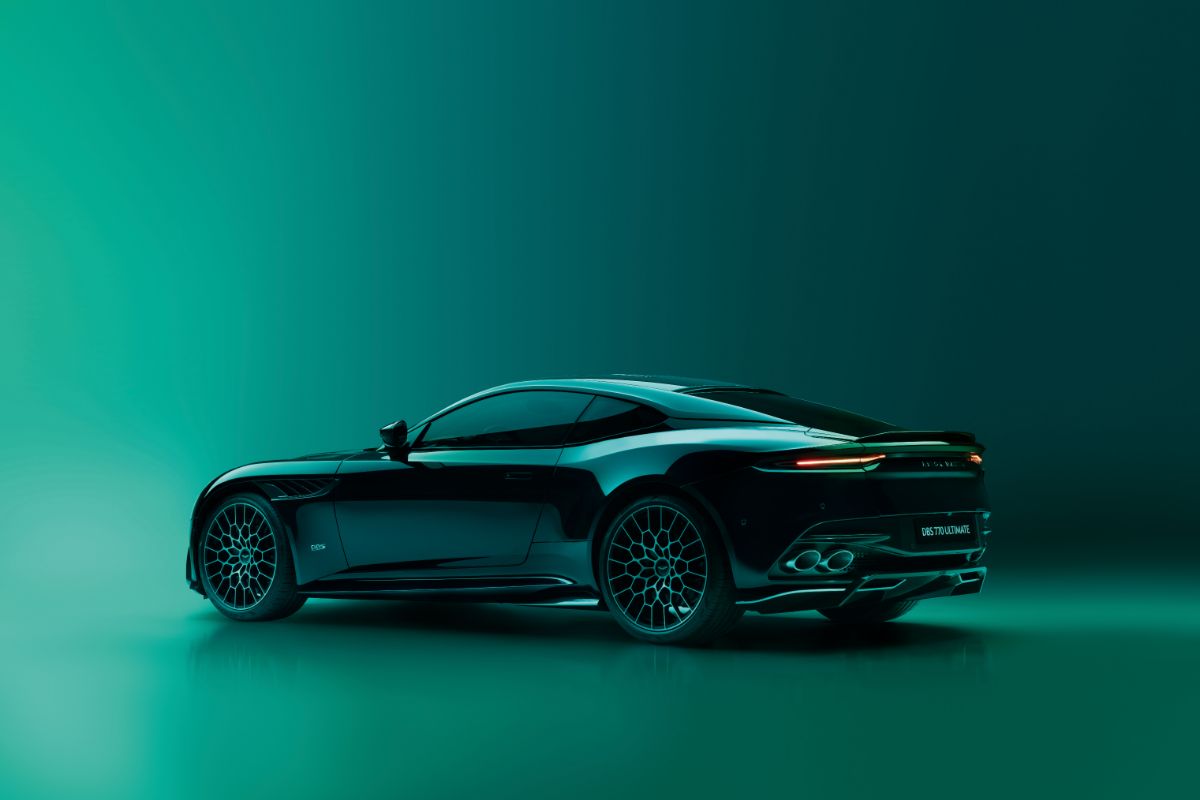
“DBS has always sat at the pinnacle of the Aston Martin production model line-up. And now we’re infusing DBS 770 Ultimate with even more… more power, more performance purity and all with more sophistication, more taste and in the most considered manner,” adds Marek Reichman, Aston Martin’s Chief Creative Officer. “Something so raw, and yet so beautiful it’s almost intimidating to look at. It’s through this design approach that we came up with the shapes – starting with the amped-up front end – and from there everything else flows in design balance with the performance upgrades.”
The first customer example of the Mercedes-Benz AMG One hypercar has been delivered more than five months after production started and more than five years after the car was first shown at the 2017 Frankfurt auto show.
The first customer example is finished in black and was delivered to a customer in Germany.
Just 275 examples are planned, with some confirmed buyers including Formula 1 drivers Lewis Hamilton, Nico Rosberg, and David Coulthard. For anyone hoping to join that list, all build slots are gone, despite a starting price of 2.275 million euros (approximately $2.572 million).
Even though a lot of the build slots went to customers in the U.S., AMG wasn’t able to certify the car and its finicky F1 engine for sale here without a substantial loss in performance, and thus won’t sell it here. There is some hope for U.S. customers to take delivery on home soil in the form of the Show or Display rule, however.
Production of the One is handled at a dedicated facility in Coventry, U.K., close to where Mercedes’ F1 engines are built. The F1 engine builder Mercedes‑Benz AMG High Performance Powertrains is also responsible for the One’s engine.
The engine is a turbo 1.6-liter V-6, specifically the design from Mercedes’ championship-winning race car from the 2015 F1 season. But the rest of the One’s powertrain is actually more sophisticated than in the F1 car. While in the race car there’s only the turbo V-6 and a motor-generator driving the rear wheels, plus a second motor-generator integrated with the turbocharger, the One has two additional motor-generators. These drive each of the front wheels and provide the One with all-wheel drive. Peak output is 1,049 hp, though the car is relatively heavy for a two-seater, weighing in at 3,737 pounds.
Performance is scintillating, as estimates include a 0-62 mph time in 2.9 seconds and a top speed capped at 219 mph, likely due to the aerodynamics. The One also holds the Nürburgring lap record for a production car, with its time of 6:35.183 set last fall on a damp track.
HIGH-RES GALLERY: First customer example of Mercedes-Benz AMG One
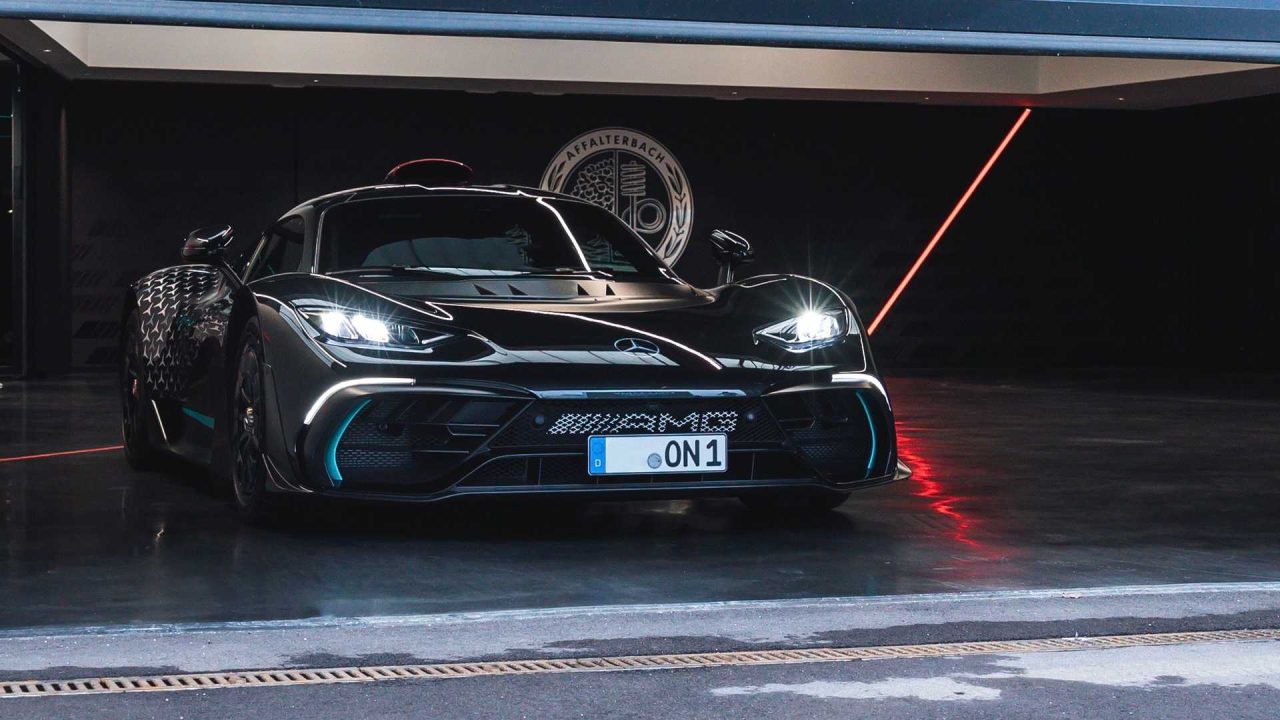
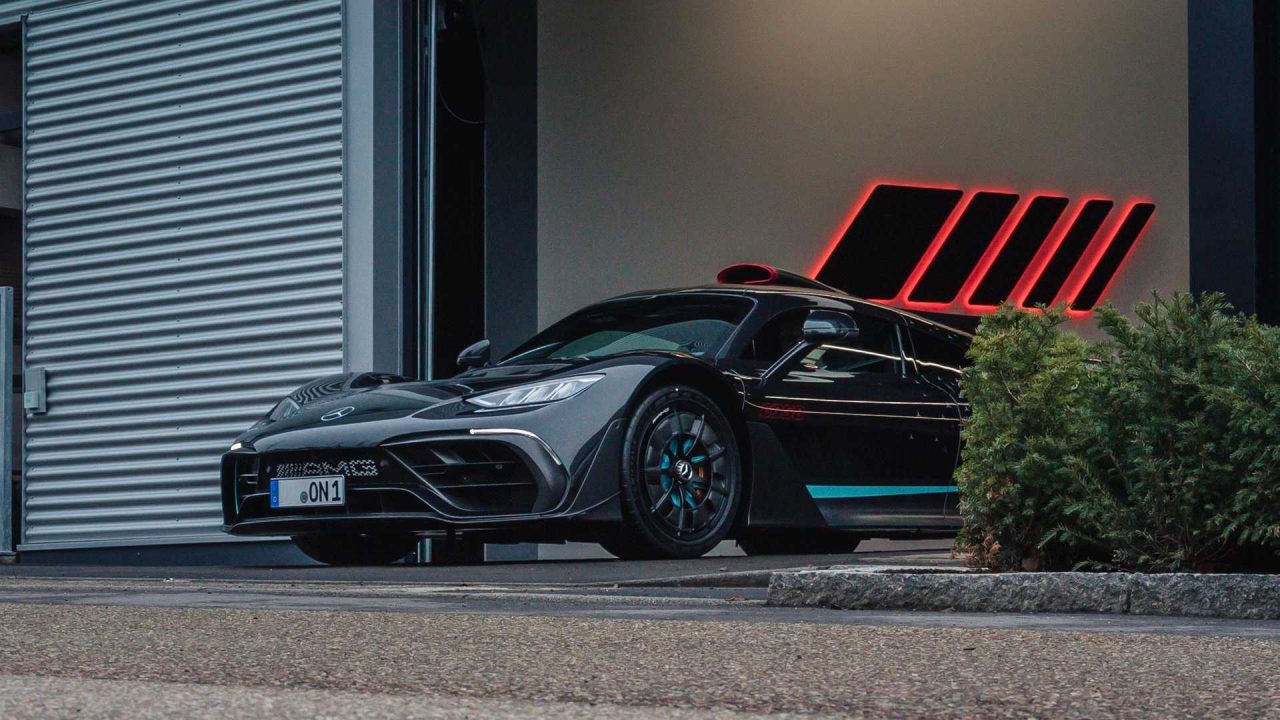
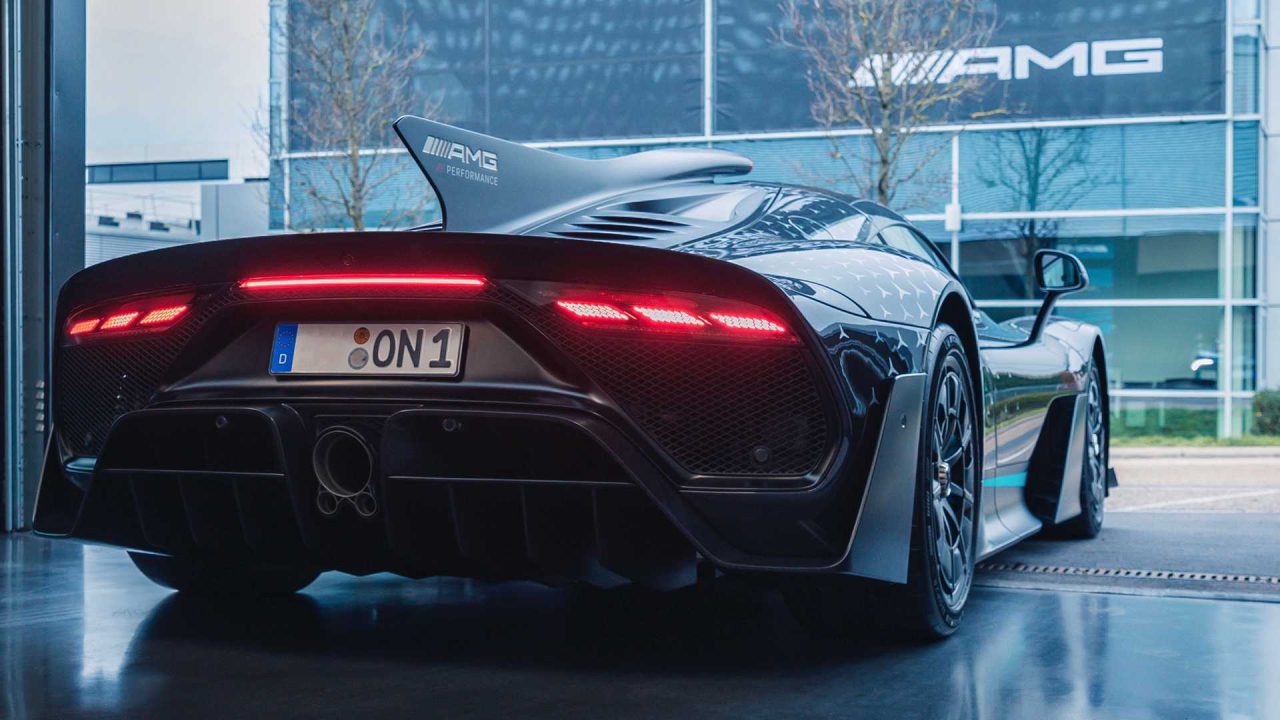
This article was originally published by Motor Authority, an editorial partner of ClassicCars.com.
Hemmings will celebrate all things truck and SUV, both on pavement and off road, at the Tailgate Throwdown from March 31 to April 2 at NOLA Motorsports Park in New Orleans, Louisiana.
More than just another truck show, the Tailgate Throwdown will utilize all the facilities of NOLA Motorsports Park for a weekend full of on-road and off-road activities for new and classic trucks and SUVs. From drag racing and autocross to dirt racing and trail rides, the Throwdown features something for every automotive enthusiast. The truck show portion will be open to all years, makes, and models of trucks, including lifted trucks, lowered trucks, and everything in between. Even El Caminos and Rancheros are welcome.
“The Hemmings brand is well known in the automotive industry, and we are ecstatic to have the opportunity to partner with them,” said Erin Groseclose, NOLA Motorsports Park’s director of marketing and events. “Together we plan to make the first Tailgate Throwdown a must-see event for off-road, truck, and motorsport enthusiasts. This event goes hand in hand with the vibe and culture of New Orleans and will undoubtedly resonate with the fans.”
Event entry, which includes a spot in the truck & SUV show, will be $50, with entries into the autocross, drag racing, or off-roading events an additional $25. Spectator admission will be $20 for the general public, $15 with a military/first responder discount, and free for kids 10 and under. Tickets go on sale January 16.
For more information and to purchase tickets, visit HMN.com/TailgateThrowdown.
Actor, comedian and gearhead Rowan Atkinson is parting ways with his 1993 Lancia HF Integrale Evo II. The hot hatchback is being offered by Silverstone Auctions with an estimated hammer price of $80,000 – $92,000 (£65,000 – £75,000).

Atkinson rose to prominence with his roles in the TV series “Black Adder” (1983-1989) and “Mr. Bean” (1990-1995). He has had an extensive movie career and was named one of the 50 funniest actors in British history by The Observer. Atkinson is also a devout car collector (his collection once included a McLaren F1) and weekend racing driver with an unfortunate tendency to have the occasional shunt.
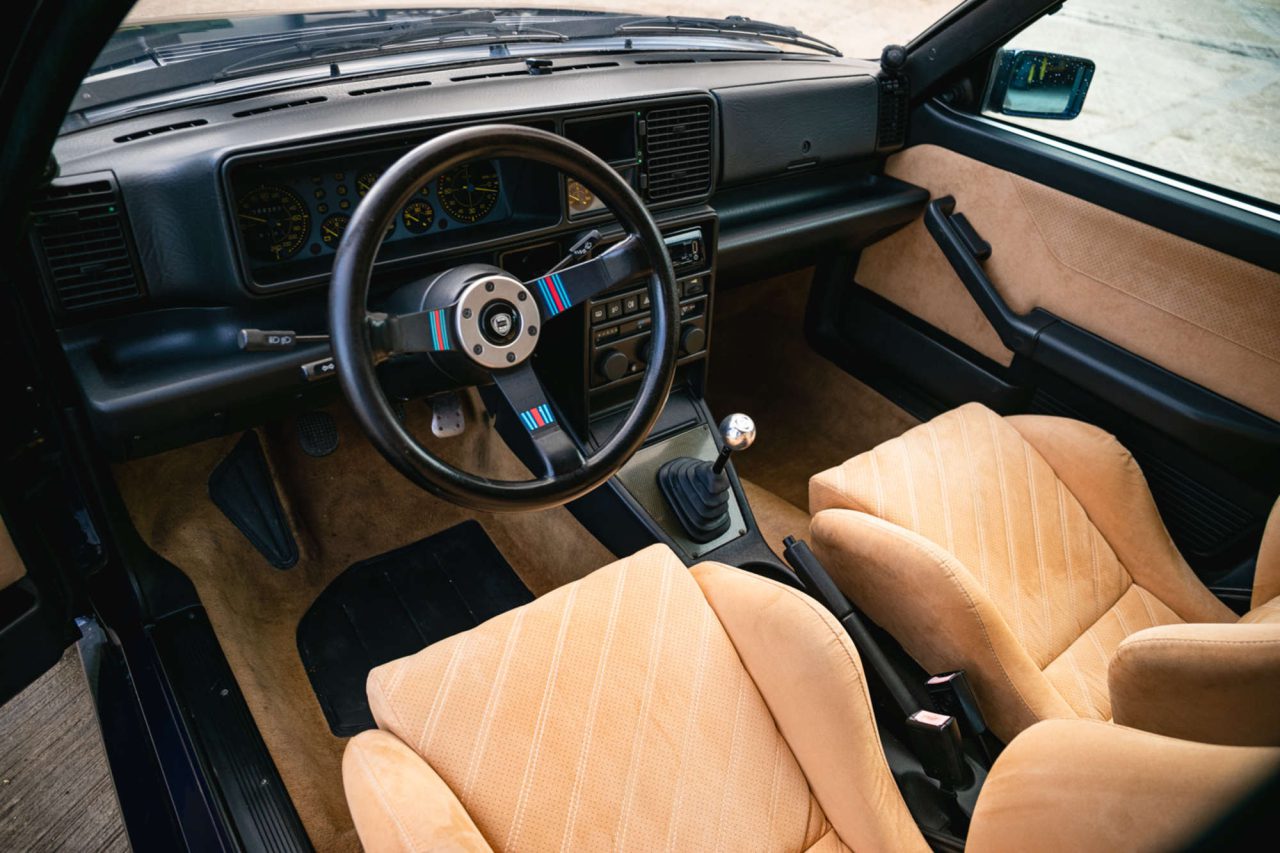
This dark blue Lancia offered at Silverstone is one of 4,233 1993 Lancia HF Integrale EVO IIs built for the global market. This 56,000-mile (90,000-km) example features a two-liter, 16-valve turbo inline-four with three-way catalytic converter, lambda probe and new Marelli integrated engine control system. The engine is paired with a five-speed manual transmission.
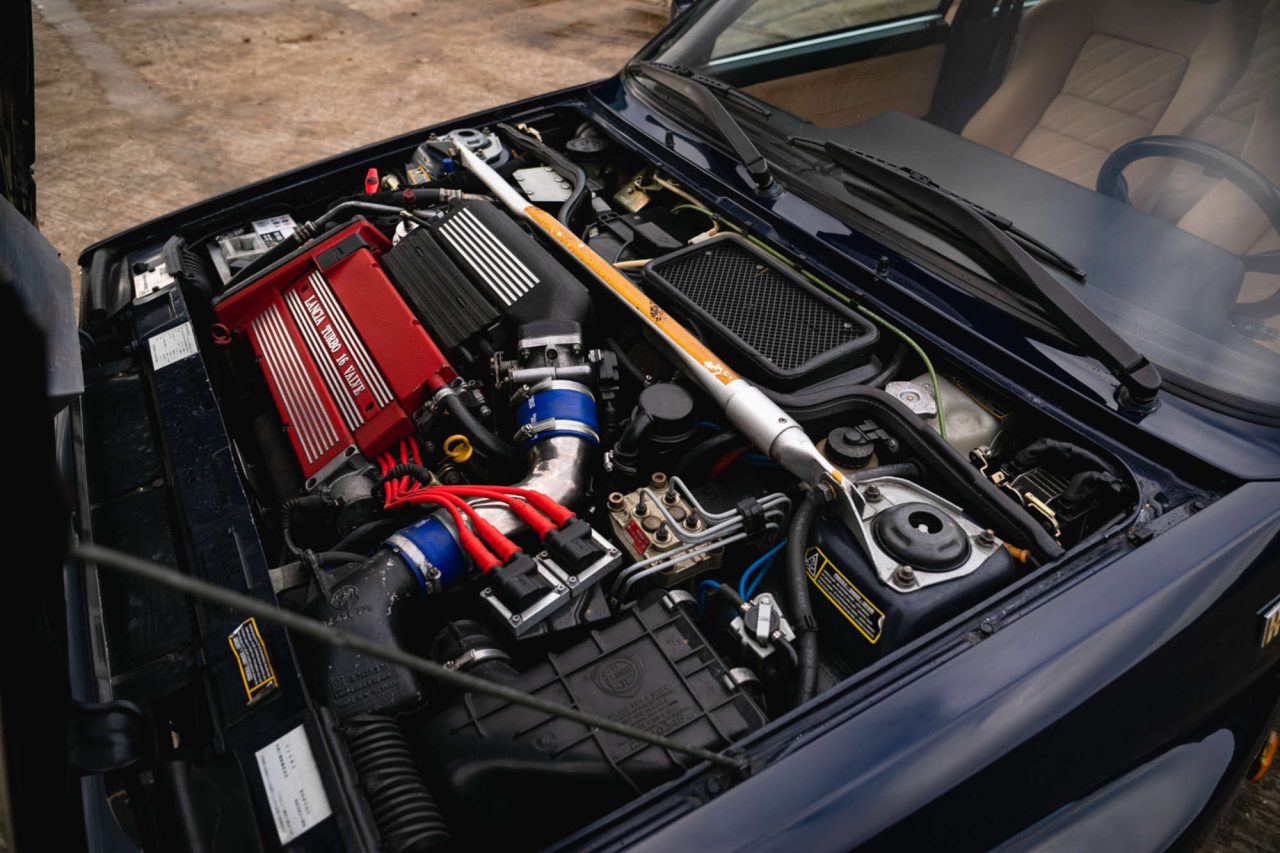
“Originally supplied to Japan, this car was then selected and imported back to the UK in 2011 with all duties paid,” Silverstone Auction’s listing states. “It had been chosen for its rare colour of Lord Blue which is extremely smart and also its comprehensive Japanese service history. The interior of this particular car is also immaculate with the Tan Alcantara high-back seats still looking like new. Maintained professionally on an annual basis in the UK, the car had covered just over 87,000km (54,000 miles) when, back in May 2021, it was purchased by well known comedian, actor and long time petrol head, Rowan Atkinson CBE.”
Atkinson’s 1993 Lancia HF Integrale Evo II is available for sale on February 25, 2023, at Silverstone Auctions’ Race Retro Show in Stoneleigh Park, Warwickshire.
Date: March 1976
Location: Barberton, Ohio
Source: Lewis Henderson, via Summit Memory
What do you see here?
Photo by Lewis Henderson
For many muscle-car fans, there’s no finer example from Pontiac’s classic line-up than the 1969 GTO. The second-generation Gran Turismo Omologato (1968-1972) is on many folks’ wish lists for its legendary performance, good looks and timeless Pontiac styling.
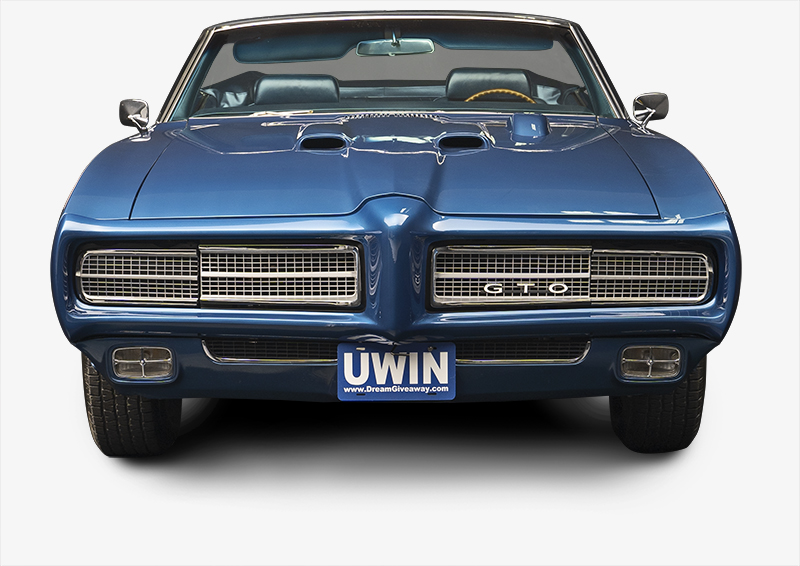
After coming off the win for Motor Trend’s Car of the Year in 1968, Pontiac’s stylists improved the GTO’s looks subtly for the 1969 model year. Aesthetic revisions included the deletion of the side vent windows, a mesh-look revamp to the front grille, red rear-quarter side-marker lights shaped like Pontiac arrowheads, and new front-parking-light, rear-taillight and rear-chrome-bumper designs. Inside, the gauges changed from blue to black.
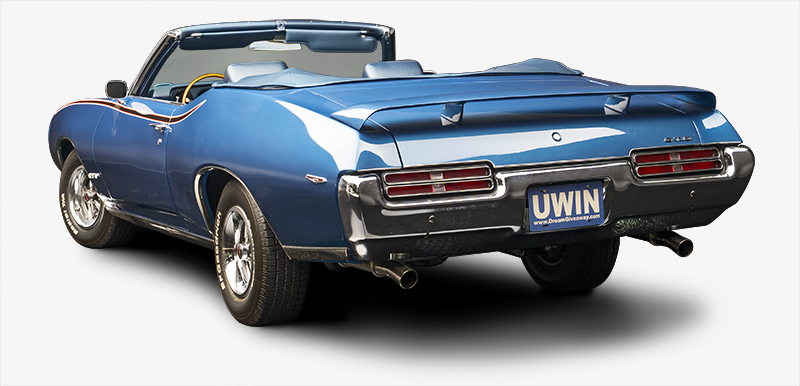
Despite the ooh la la in the looks department, sales were down from the previous year’s tally of 87,684 GTOs sold.
Though it was a dip, Pontiac produced a total of 72,287 GTOs in 1969. Of those, 7,436 were convertibles. And of those, 249 were equipped with the 366hp Ram Air III V-8 engine and a four-speed manual transmission, but not with the Judge package.

So, when the Dream Giveaway Garage asked us if our readers’ hearts would go thumpity-thump over a Ram Air 1969 GTO convertible, well, you already know the answer.
Who wouldn’t want to win a Judge in sheep’s clothing?
As Pontiac’s flagship muscle car, all 1969 GTOs came with 400-cubed V-8s. Two optional, higher-performance mills were available by special order: a 366hp Ram Air III and a 370hp Ram Air IV.
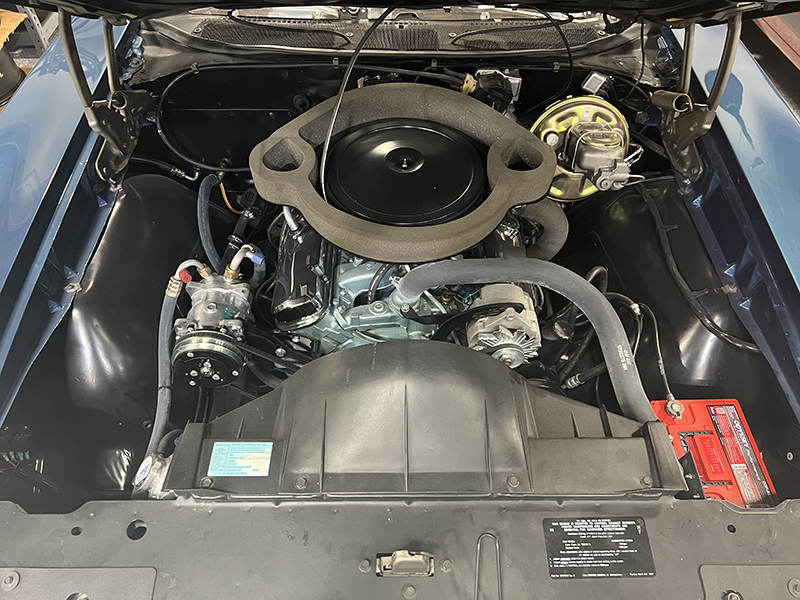
A quick review of the invoice graciously provided by PHS confirms a Ram Air III under the hood. Continuing down the line, the two additional performance options most collectors ooh and aah over are present as well: a four-speed manual stick and a heavy-duty Safe-T-Track differential.
If putting this cool classic GTO convertible in your driveway sounds good to you, then click here and enter now.
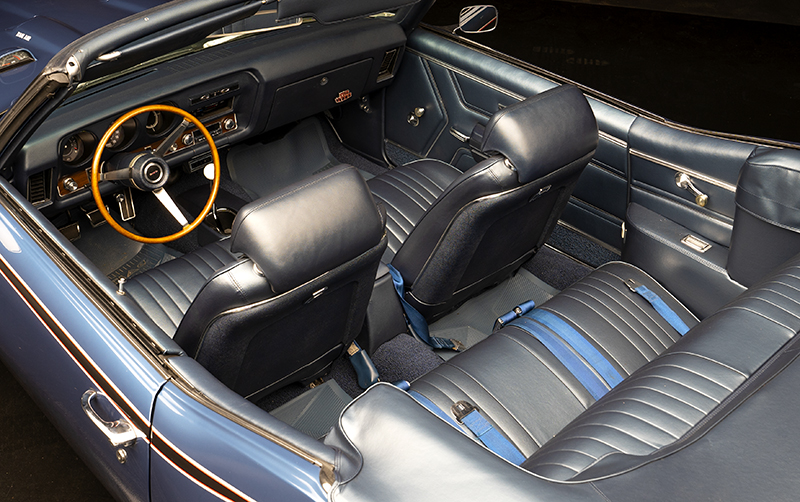
The factory also installed a push-button radio, retractable headlamp covers, Rally II wheels, hood-mounted tachometer, console, power steering and ride-and-handling package. You’re spot on calling this a nicely optioned Ram Air GTO! Oh, restoration parts were provided by Ames Performance.
Let’s get back to the details of how you can win this GTO.
Make a donation of $25 or more to help out charity and, if you’re lucky, you could find this primo example of America’s original super-car staring back at you from its new permanent home in your garage. Click here and enter now.
Entry banks close at midnight on January 30, 2023. Click here to get double tickets on your donation of $25 or more. The winner will be drawn on February 9, 2023, and the awarding of the keys, the title and the GTO will occur in late February or early March of this year. Plus, there’s $15,000 set aside to pay the federal government the prize tax on behalf of the winner. This is your last chance to win this rare Pontiac GTO. Enter now
Featured on AutoHunter, the online auction platform driven by ClassicCars.com, is a 1973 Chevrolet Camaro Z28.
This Camaro Z28 is finished in Midnight Blue (code 29) complemented by a white D88 hood and rear deck sport stripes, Z28 emblems, a front chin spoiler, and a three-piece rear spoiler.
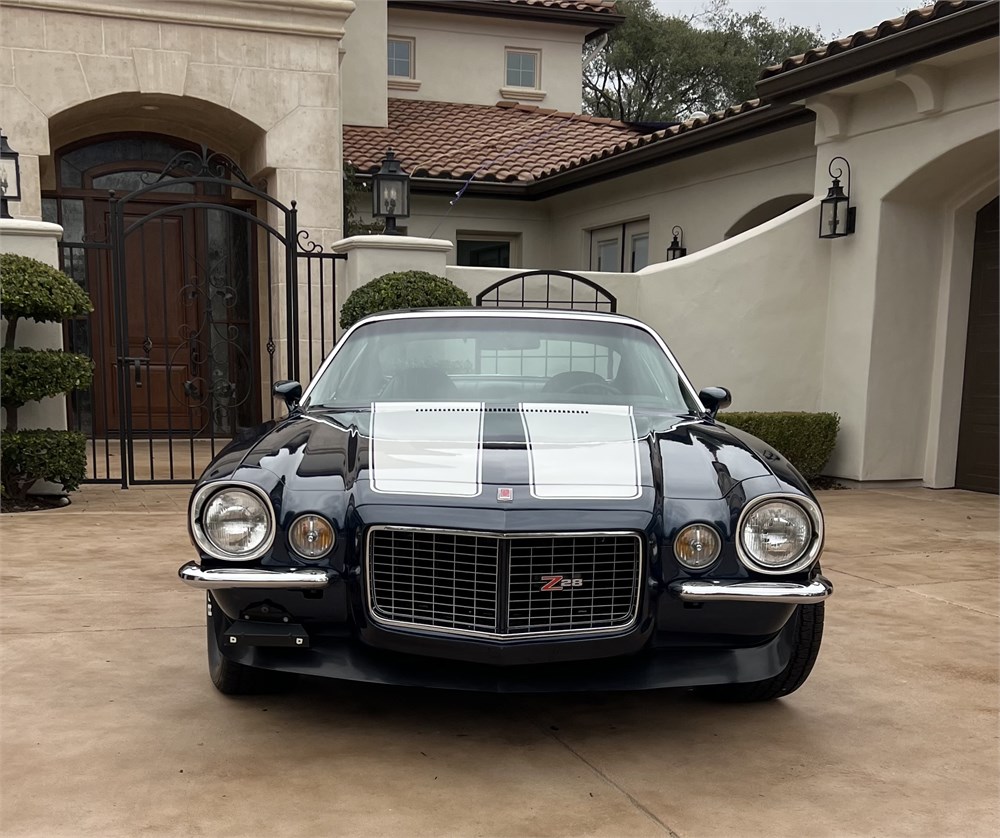
It rides on 15-inch gray Camaro Rally wheels with chrome center caps, stainless trim rings, and 245/60/R15 BFGoodrich Radial T/A tires.

“The front bucket seats, rear seat, and door panel inserts are upholstered in black vinyl” the listing states. “Features include power steering, power brakes, air conditioning, a center console with a storage compartment and a Hurst four-speed manual shifter, an AM/FM/Bluetooth Antique Automobile Radio, manual windows, and a four-spoke steering wheel. The seller states that the rear defroster blower does not work.”

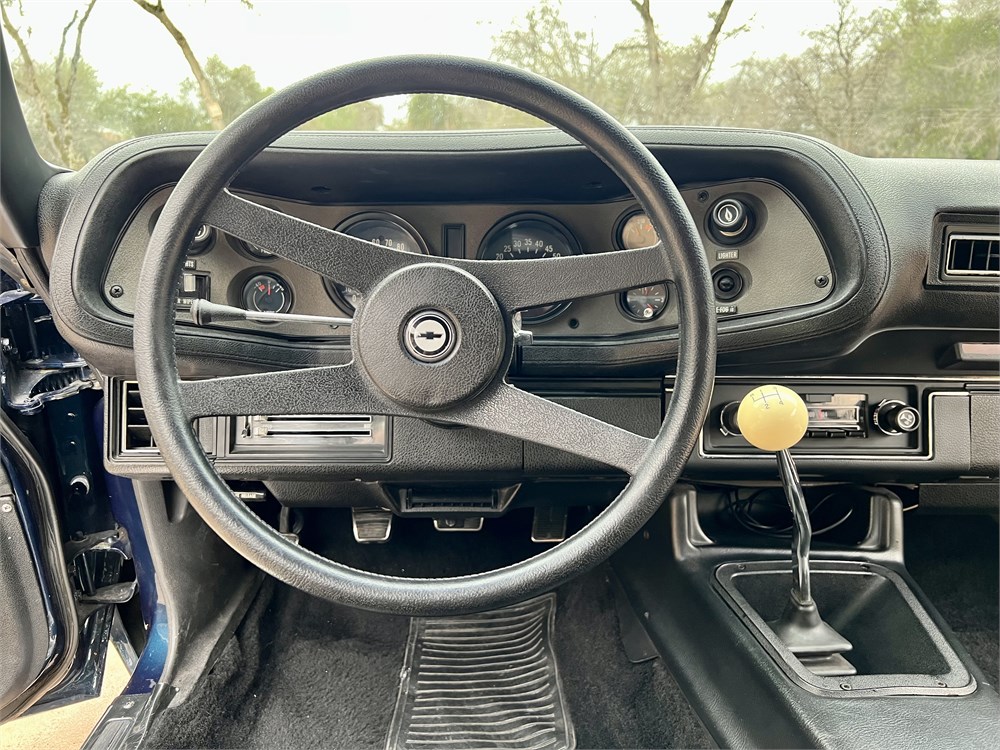
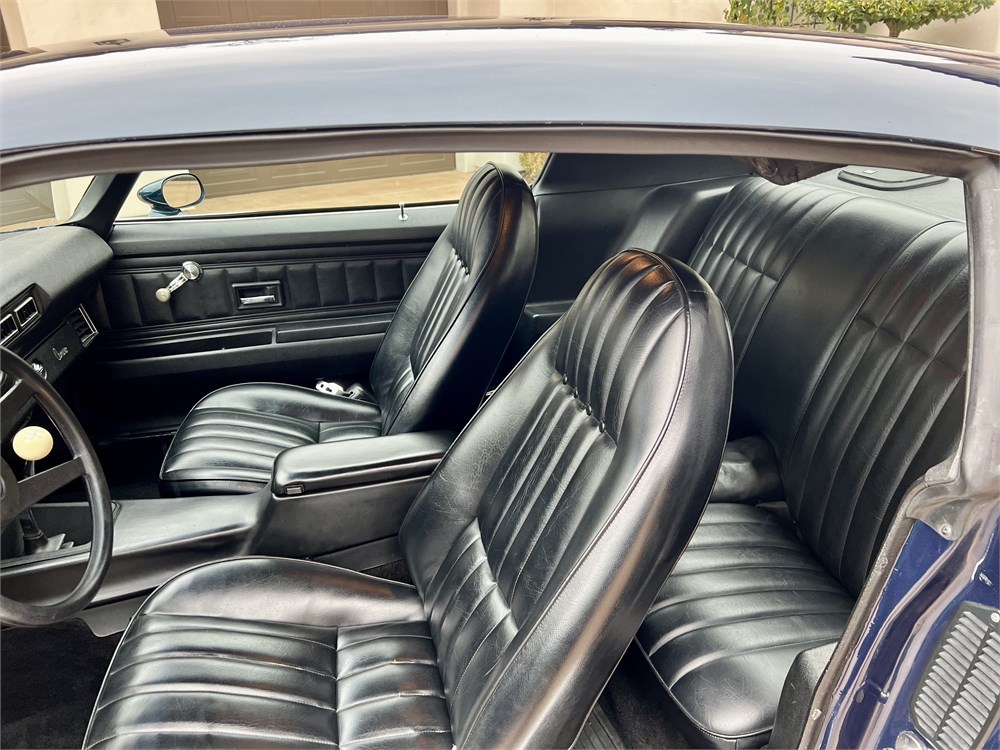
Under the hood is an 350ci V8 L82 engine featuring a new Demon carburetor, an aluminum Edelbrock intake, MSD ignition, and a K&N air filter. The engine is paired with a Muncie M20 four-speed manual transmission.
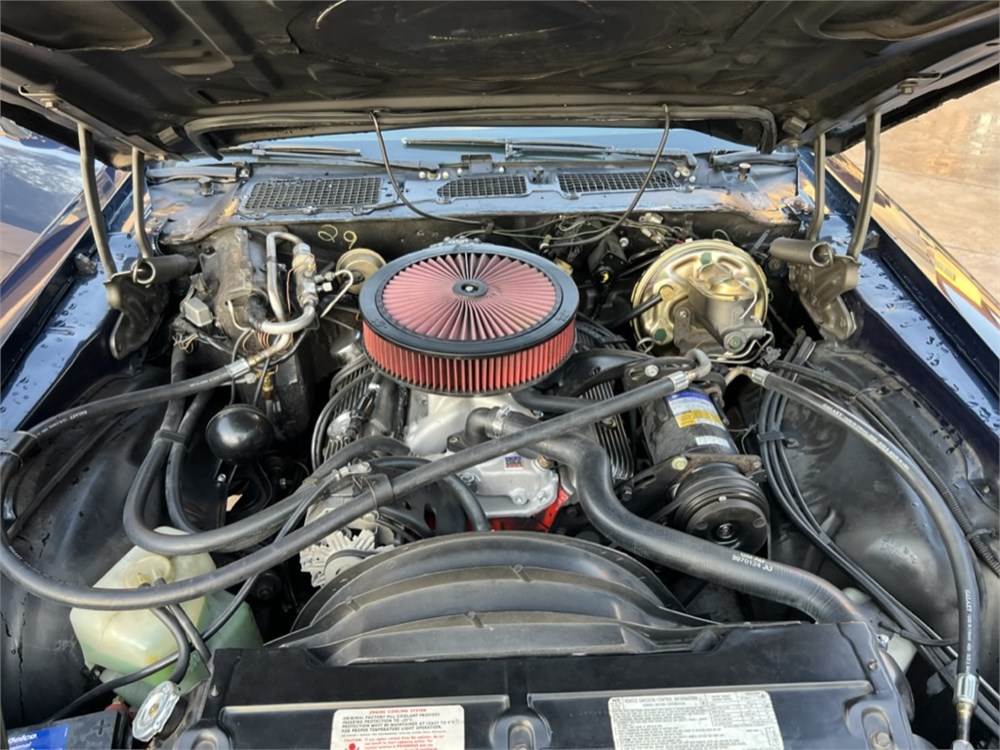
This Camaro has power front disc and rear drum brakes. The seller states that new leaf springs have been installed, and the air conditioning was recently serviced.
The odometer reads 13,375 miles, but the true mileage on this vehicle is unknown. The sale includes a clear California title in the seller’s name, receipts, and the removed air cleaner, carburetor, and manifold.
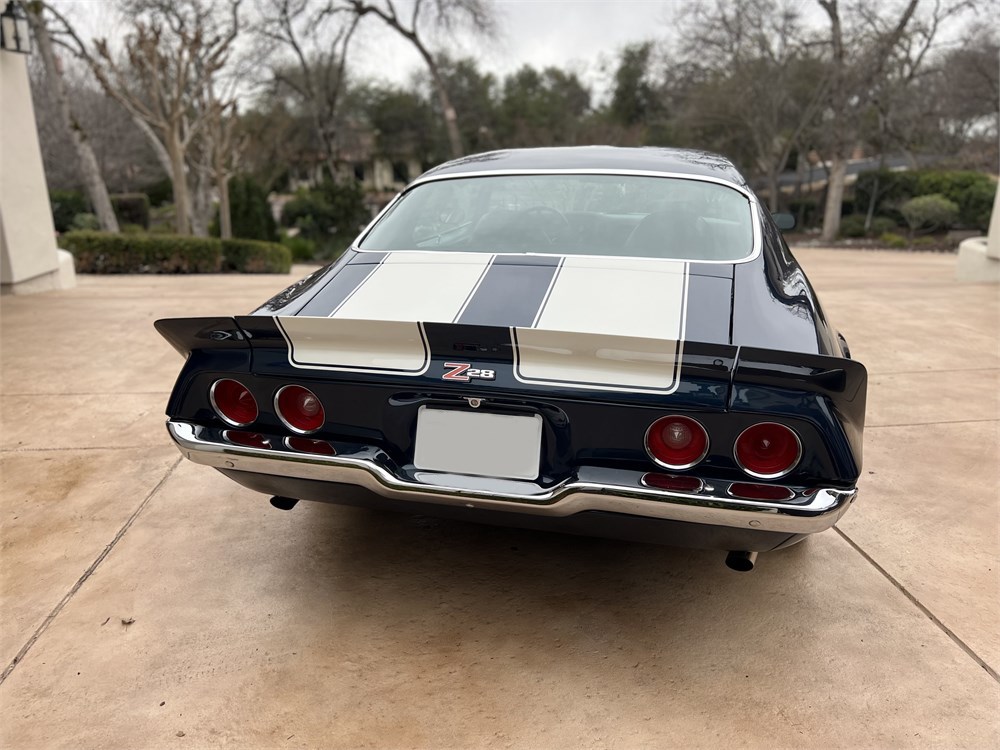
This 1973 Chevrolet Camaro Z28’s auction ends on January 20, 2023, at 4:20 p.m. (MST)
Visit the AutoHunter listing for more information and photo gallery
The Pick of the Day is a 1955 Imperial Newport two-door coupe — just don’t call it a Chrysler. From 1955 through 1975 (plus a 1981-83 revival), Imperial was a separate brand of the Chrysler Corporation, competing with Cadillac, Lincoln and Packard as America’s finest motorcar. This particular vehicle is listed for sale on ClassicCars.com by a dealership in Illinois.
When Virgil Exner introduced Chrysler Corporation’s Forward Look in 1955, it injected much-needed excitement into a company that was lagging in style compared to its cross-town competitors in Detroit. Imperial in particular was a crowning achievement of sorts, preening with added distinction compared to previous years, which often came off as an upscale Chrysler.
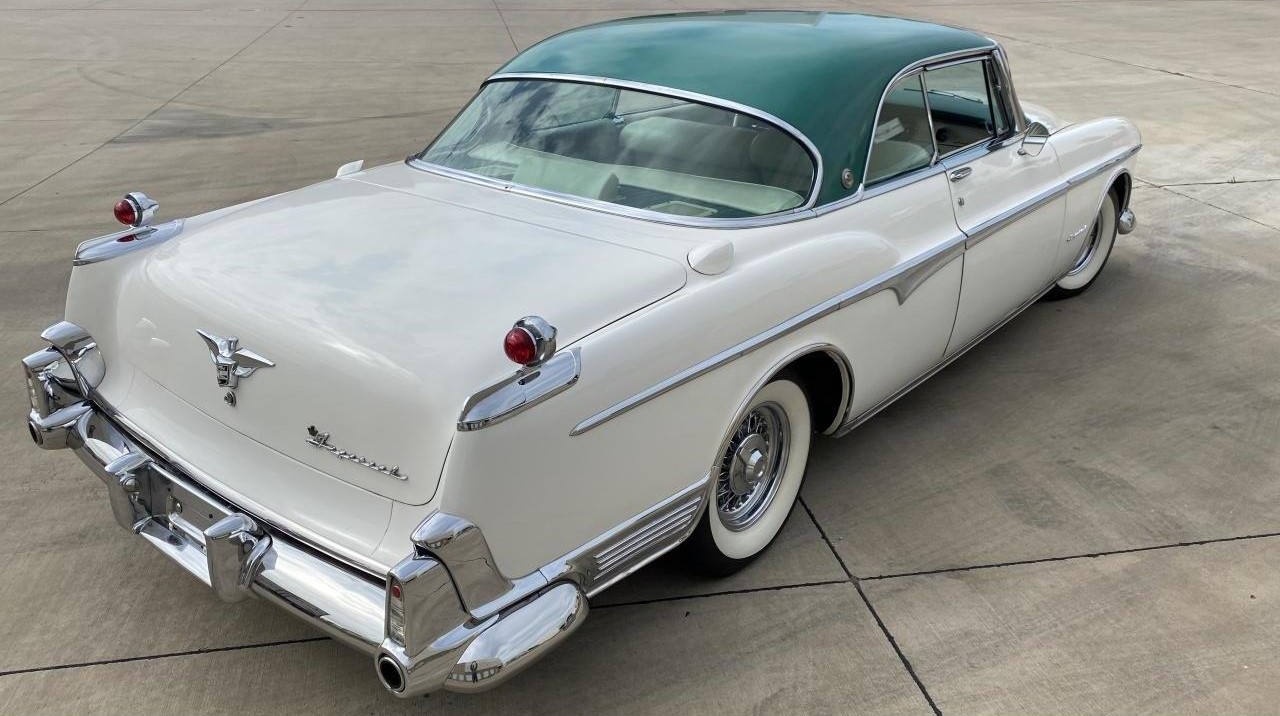
For the first time in years, Imperial was on equal footing with Cadillac, even though Cadillac was at its style peak during this era. Thanks to “100-million-dollar look” styling, including a wide egg crate grille (which the Chrysler C-300 “borrowed”) and distinctive, show car-inspired gunsight taillights mounted on the rear fenders, Imperial declared its arrival in high style.
A four-door sedan and the two-door Newport hardtop coupe were the core Imperial models, with a Crown limo for those who wanted to make a splash at the social club. That paled compared to the breadth of Cadillac’s lineup, but its trump card was engineering — long a Chrysler Corporation competency. A 331ci FirePower Hemi V8 with 250 horsepower competed toe-to-toe with Cadillac save the Eldorado. Within a few years, Imperial would exceed Cadillac on just about every objective metric.
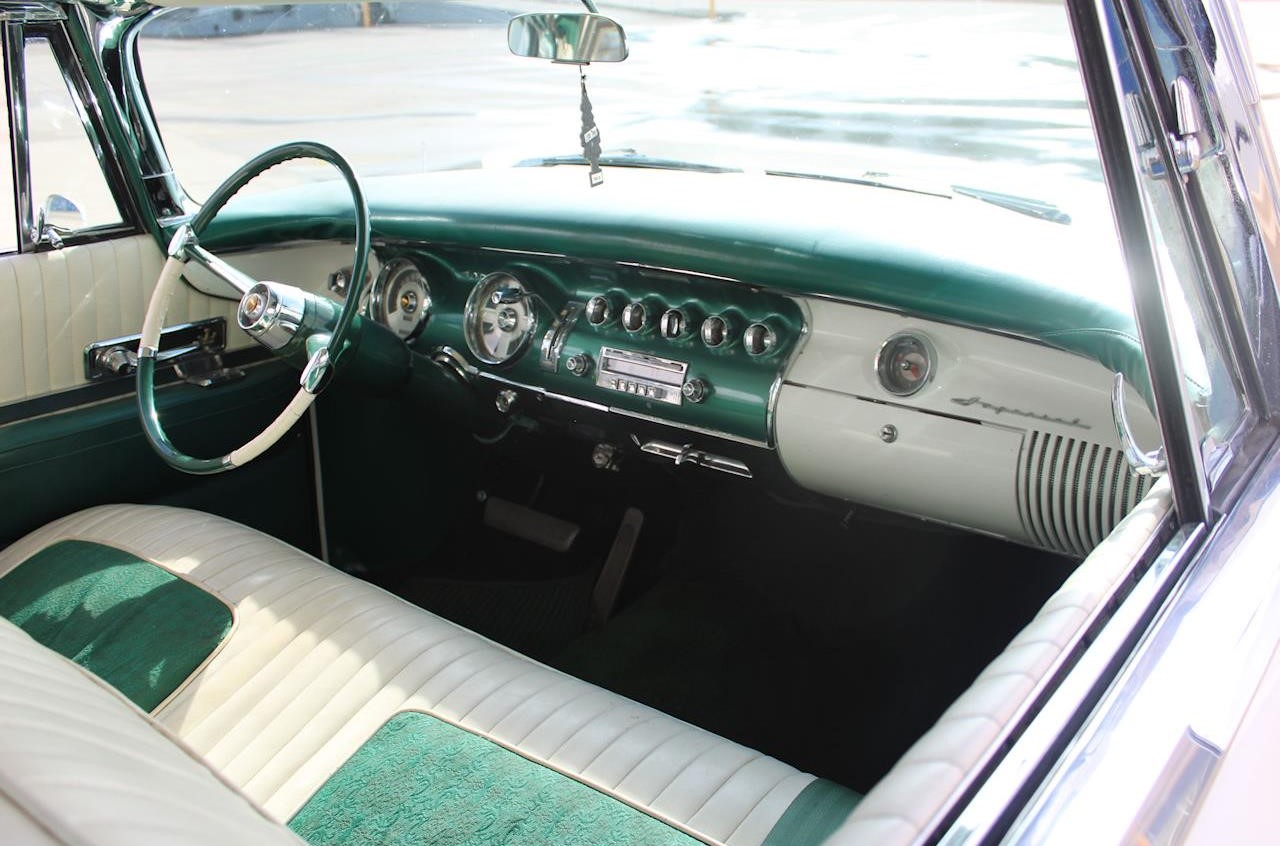
This Jade Green over Platinum 1955 Imperial Newport for sale on ClassicCars.com is one of 3,418 built and features a matching leather and cloth interior with power front bench. Aside from the standard power windows, desirable options include 15-inch chrome wire wheels with faux spinners and air conditioning, a pricey option that added more than 10% to the price of the car. Included with the Hemi V8 was PowerFlite automatic transmission with dash-mounted lever. The odometer reads 71,239, though the seller has not indicated whether those are the original miles.
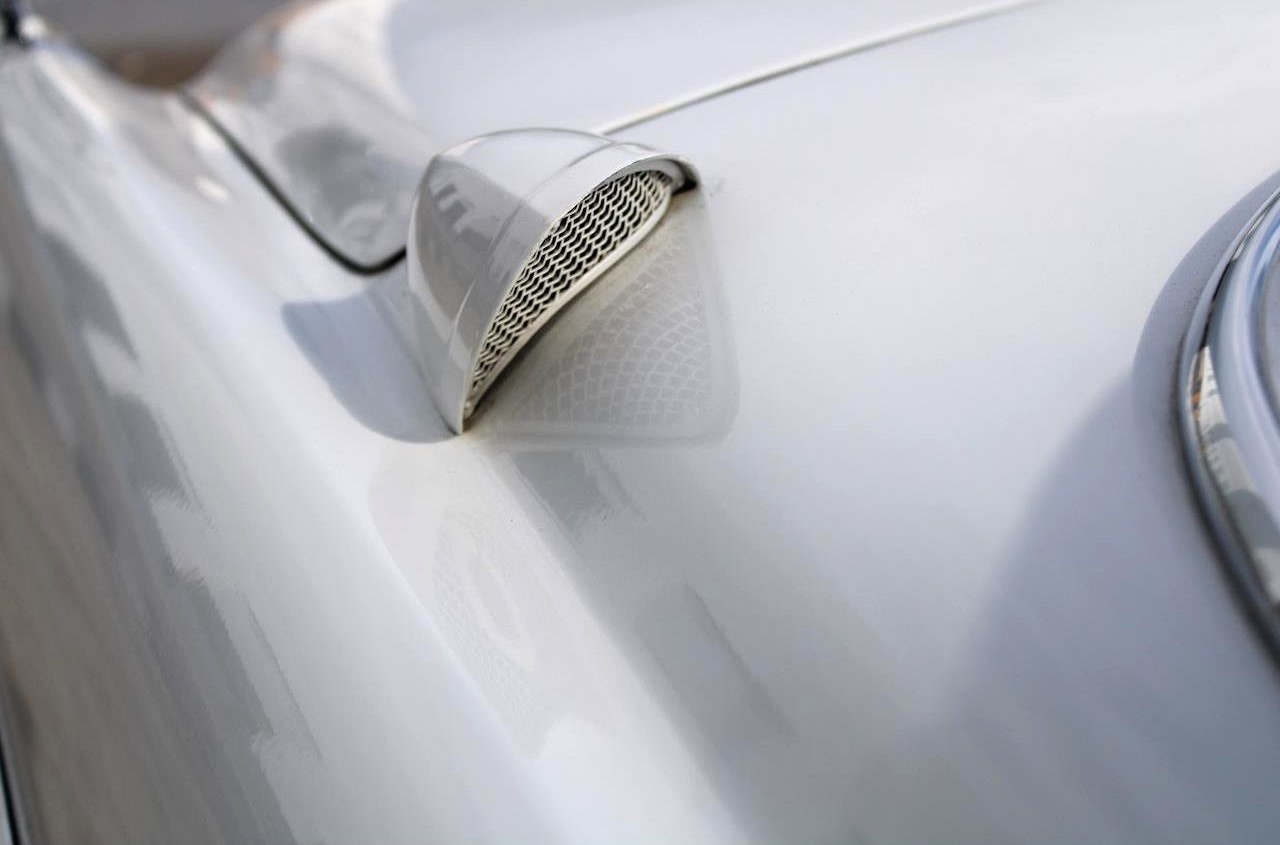
You may have noticed that 2023 has already brought some crazy prices at auction on TV, but that doesn’t mean every car is priced out of reach for the average collector. In the case of this 1955 Imperial Newport, it’s an attainable $27,000. It’s nice to see that sanity still exists in the collector car world.
To view this listing on ClassicCars.com, see Pick of the Day.
The last several months have seen a barrage of articles, in the automotive and mainstream media alike, pointing out that electric vehicles have become way too expensive for regular folks to afford. It’s a problem not just for us regular folks but also for the many initiatives to electrify the global automotive fleet. And despite recent musings from people like Toyota CEO Akio Toyoda about widespread conversion of older vehicles to electric power as a way to future-proof the cars we enthusiasts dig, converted classics can easily run into the six-figure range these days.
On the other hand, I’m on track to build my Chenowth EV for less than what a no-frills, 10-year-old, what’s-that-smell Camry costs.
How I budgeted my EV build
Those of you following this project might have noticed a distinct lack of updates since last summer. A number of other projects have demanded much of my time since then, and money’s been tight lately, even for what I intended from the start to be a low-budget DIY project that anybody—even somebody who had a lot to learn about EVs like me—could put together. And when I say low-budget, I mean no-budget. It’s funded by couch cushion change and that five-dollar-bill I forgot in my pants pocket. I did get back to making progress on it recently—I’ll provide an update on that below—but first, let’s discuss what the project has cost me so far.
As with many of my car projects, I keep a spreadsheet of expenses, largely to keep myself honest when it comes to buying parts. It’s easy to just throw parts at a car while only looking forward to the next purchase, convincing yourself that it’s a low-budget project and that you really haven’t spent that much on it to date, but that’s also a quick path to getting in over your head on a project. So I set some ground rules with myself. One: No purchase that’s necessary to get the project on the road, down to the nuts and bolts and even registration costs, is too small or extraneous to record. Two: I don’t count tools, even ones I bought for a specific task on a specific project, but I do count supplies like shrink tubing and paint that I’ll certainly have leftovers of at the end of the project. Three: I subtract from the total any money I’ve made off the car from selling used parts to the loose change I find under the floormats.
What I’ve spent to build my EV
In spite of my advice in the paragraph above, I bought much of what I needed for the Chenowth in 2021 well before I was ready to install it all. Brake lines, tires, shifter bushings, those sorts of things. I know I have a not-insignificant number of parts to get before I’m done—I still need to rebuild the beam, get a steering wheel, and install beefier transmission gears—but I’d say I’m 85 to 90 percent there. I’ll also include the disclaimer that I have not used my position at Hemmings to cadge any free or discounted parts or services from parts suppliers. There’s no inaccessible-to-the-common-man, secret-handshake, good-ol’-boys-club privilege at work here.
Grand total, so far: $9,980.26.
The biggest chunk of that total was the 2011 Nissan Leaf that I bought as a drivetrain and battery donor. It cost me $6,000 (plus the $85 to replace its flat tire, the $469 in registration and taxes to drive it around the block a few times, and the $150 I paid a local used car dealer to evacuate the air-conditioning system), but I also made sure it was a complete and running vehicle so I wouldn’t have to purchase any additional miscellaneous parts—the computers, the pedal assembly, the drive selector—that I would need to make that electric motor turn.
The Chenowth itself, which included front and rear suspension, a transaxle good for parts only, steering column, seized drum brakes, and little else, cost $1,000. I spent a little more than $700 on a disc brake conversion and other brake components and $530 on new tires. The aluminum disc and the custom coupler I used to mate the Leaf motor to the Volkswagen transaxle cost $330. So far I’ve put roughly $560 into steel and other supplies for the battery boxes.
How I saved money on the build
Yeah, it adds up fast, and I probably didn’t need to spend the extra money for the disc brake conversion kit, but I’ve also trimmed costs in plenty of other ways to make up for that added expense. To start with, the state of Vermont offers a rebate program for the purchase of used electric vehicles; in my case, that was worth $750 (registering the Leaf, as noted above, was necessary to get the rebate). Spare VW parts are plentiful if you know who to ask, and Jim Howe, a former Hemmings columnist, gave me a good number of spare parts hanging around his shop, including a rebuildable transaxle, some wide five wheels, and a spare front beam. Instead of spending four figures on some racing seats that probably wouldn’t fit in the Chenowth’s tight cockpit anyway, I recently scored a free set of seats that fit perfect from somebody local doing a hashtag vanlife conversion on an old airport bus. And rather than skin the battery boxes in expensive new sheetmetal, I’ve stockpiled some metal filing cabinets either found free by the side of the road or bought for dirt cheap out of local classifieds.
In fact, that grand total above may shrink in the near future as I sell off the original one-year-only 1968 VW axle shafts and some parts from the donor Leaf that I thought I needed but upon further review don’t.
Also, despite those promises I made to myself that I’d be open to more help from others, this has largely been a DIY project, and I’ve neither kept track of the time I’ve spent on it nor calculated what that labor would cost.
Of course, this is not a path for everybody to follow. The Chenowth won’t be a flashy restomod EV with quilted leather seats and fancy aftermarket gauges. It’s not the best real-world example of an EV conversion, given that it’ll be a three-season runabout rather than an everyday daily driver. Range will be limited due to the fact that the batteries are more than 10 years old and not in an ideal state of health. I’ve been at it for two and a half years, and it’s nowhere near running or driving.
Some of these are compromises made for the sake of penny-pinching while others are personal privation preferences, but they at least illustrate how it’s possible to go electric without spending the sort of money that carmakers and EV conversion companies are demanding.
I’ll also point out here that I started with little more than a bare chassis. Somebody converting a vehicle that needs little to no restoration could conceivably buy a newer Leaf donor car with better batteries and spend roughly the same as what I have.
Recent progress
As for the progress I’ve made in the last six months or so, it’s all been relegated to trying to finish off the battery boxes. When we last left our intrepid hero, he’d finished welding together the first of three boxes and started to fabricate its top. I don’t know if my welding has improved much since then (as the hillbillies around here say, “I welded, it helded”), but I’ve at least had plenty of practice welding together the box for the 20-module stack, integrating the box for the six-module stack into the box for the 22-module stack, and fabricating lids for the two larger boxes. To each of the larger boxes I’ve added a submersible breather vent, and I’ve started to figure out how to solid mount them to the Chenowth’s chassis. In the six-module box, I’ve also made room for the contactors as well as the battery monitoring system module.
It’s slow going at the moment, and I still have a ways to go before I finish the battery boxes. I need to research a bulkhead that allows the cables connecting the two larger battery boxes to pass through safely, I need to add a lid for the six-module box, I need to find a place for the master battery disconnect, I need to finalize mounts for the boxes, and I need to skin them. Once that’s all finished, I can then begin the arduous task of connecting the BMS leads before figuring out where the other necessary components, including the inverter, should be mounted so I can wire it all up.

